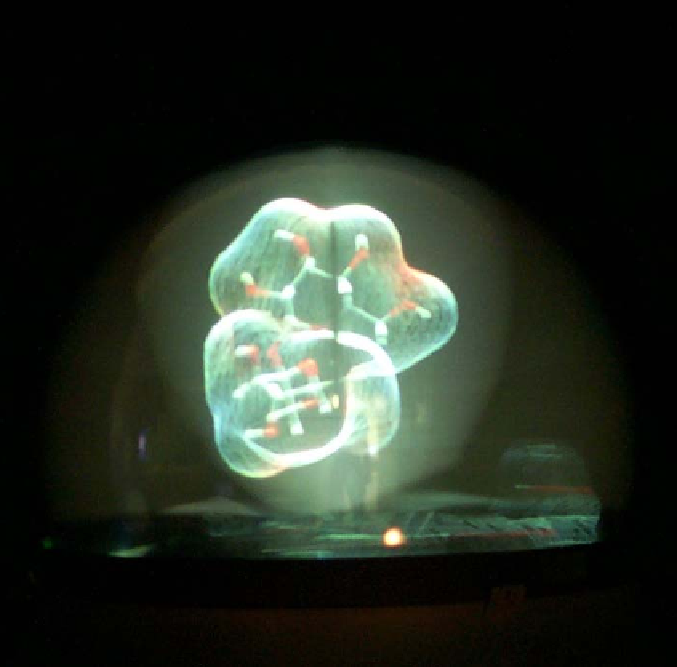Information Technology Reference
In-Depth Information
Fig. 11
Perspecta volumetric display from Actuality. Image courtesy of Actuality Systems,
Inc.
equals 2, enabling special foreground-background style content only, which is
hard to qualify as 3D. The DepthCube display [50] from LightSpace Technolo-
gies shown in Fig. 12 has 20 layers inside. The layers are LCD sheets that are
transparent / opaque (diffuse) when switched on/off, and are acting as a projection
screen positioned in 20 positions. Switching the 20 layers is synchronized to the
projection engine, inside which an adapting optics is keeping the focus.
Disadvantages of volumetric displays are scalability and the ability to display
occlusion, since the light energy addressed to points in space cannot be absorbed
by foreground pixels. The problem of occlusion has been recently solved by using
an anisotropic diffuser covering a rapidly spinning mirror [51]. As of advantages,
both vertical and horizontal parallax is provided by principle.
The natural data format for volumetric displays is layered images (in the layered
case) or image sequence showing the scene from all around (in the rotating case).

